SUMMARY OF ORGAN SYSTEMS Skeletal Major
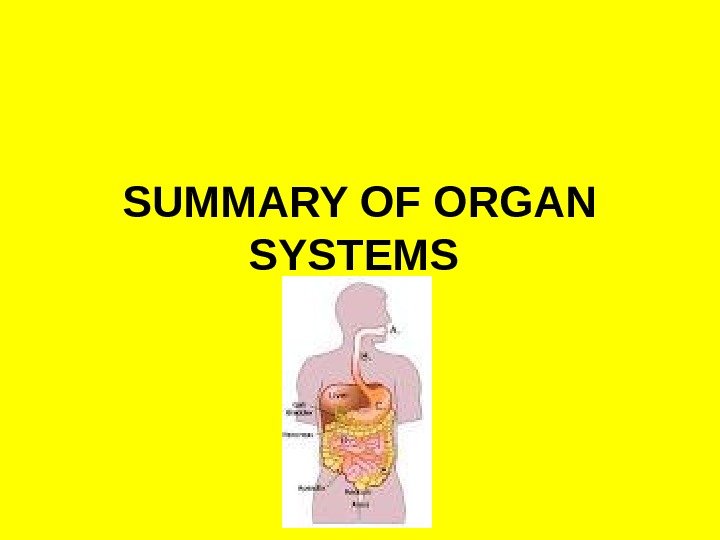
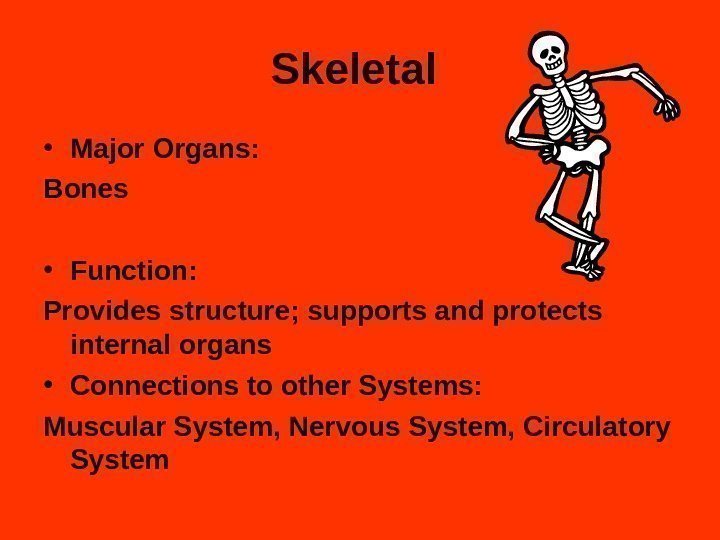
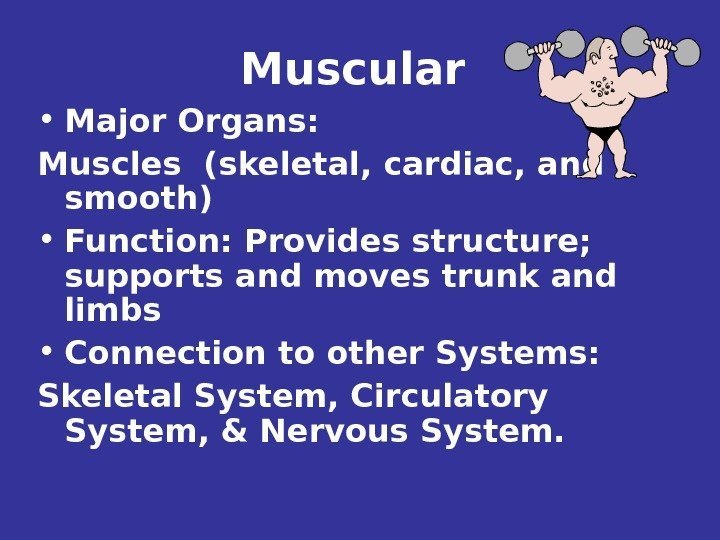
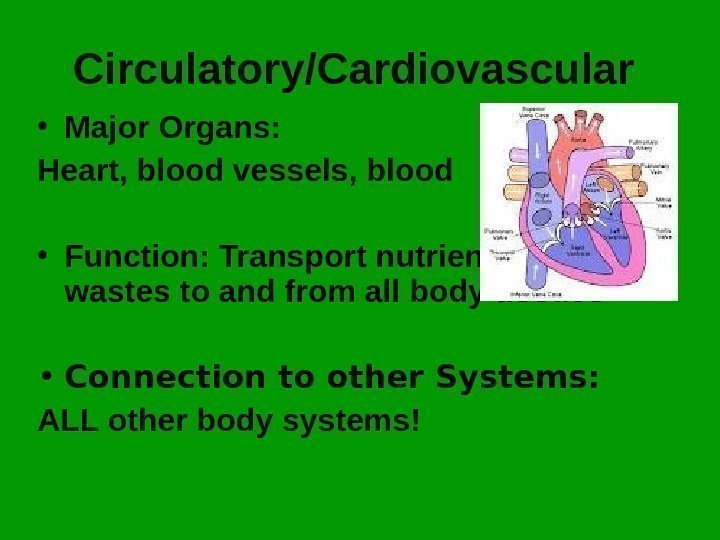
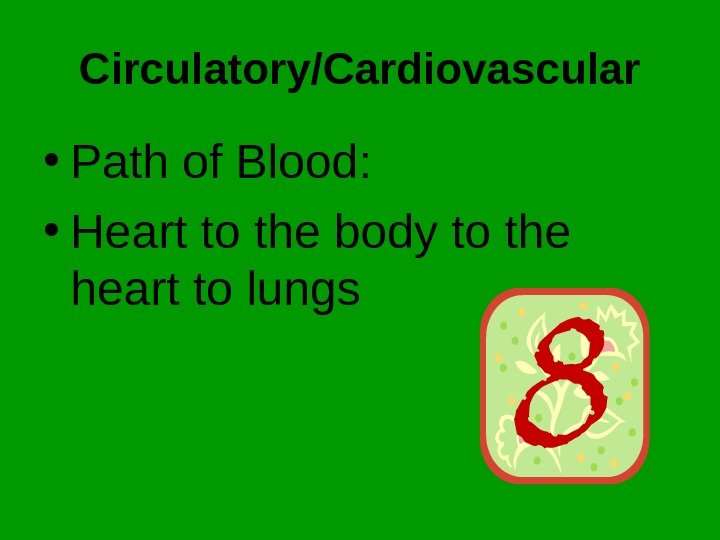
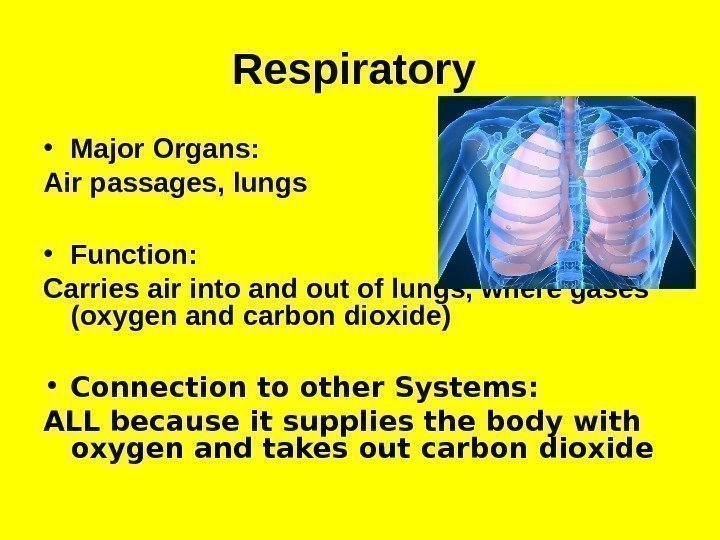
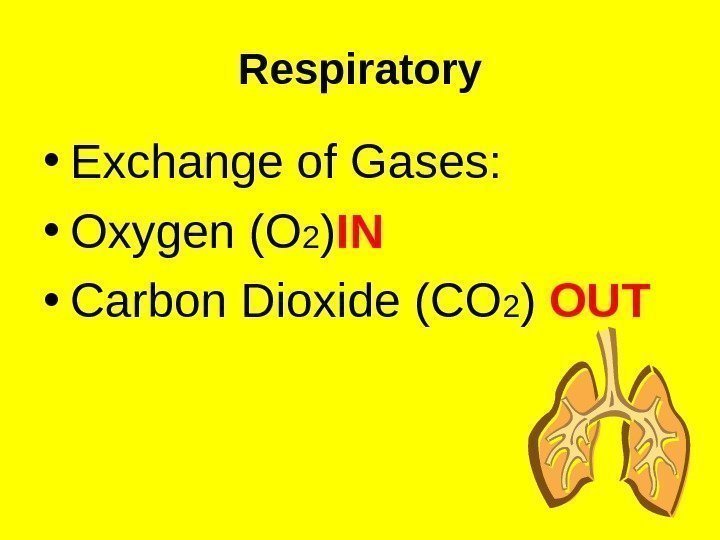
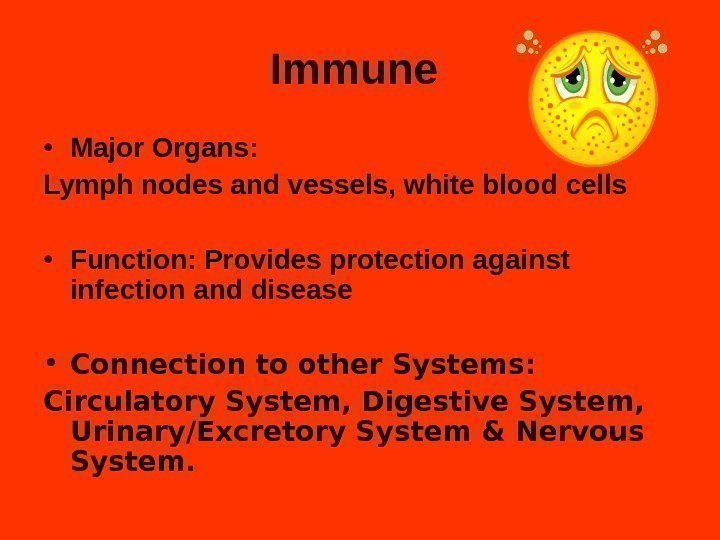
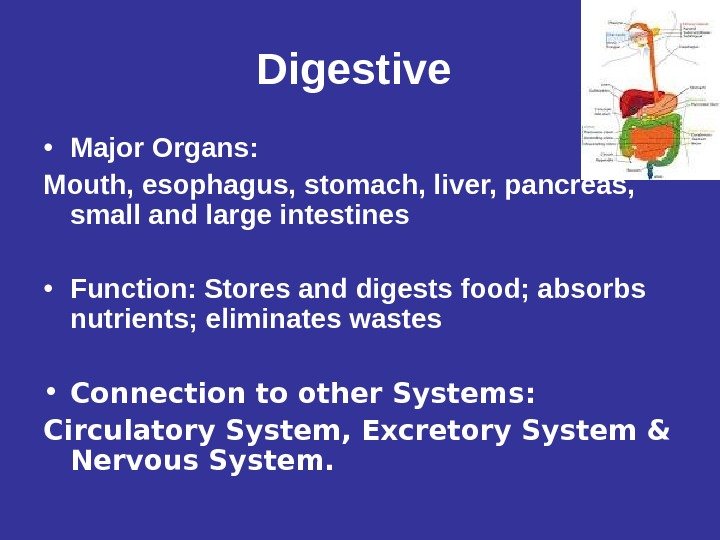
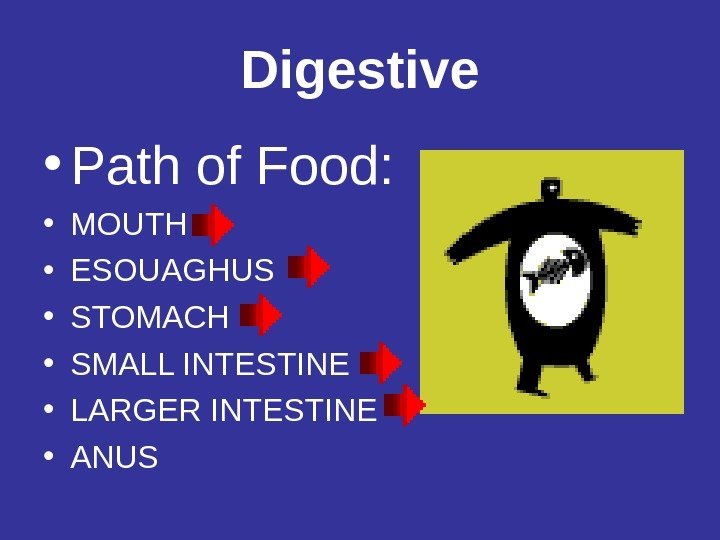
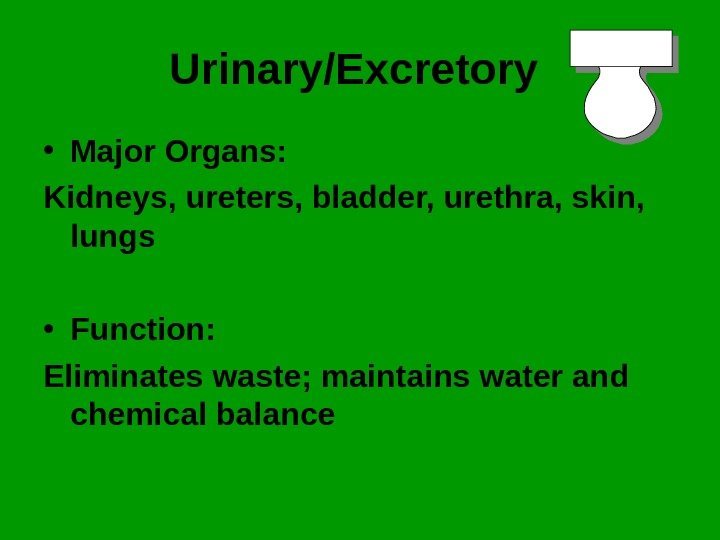
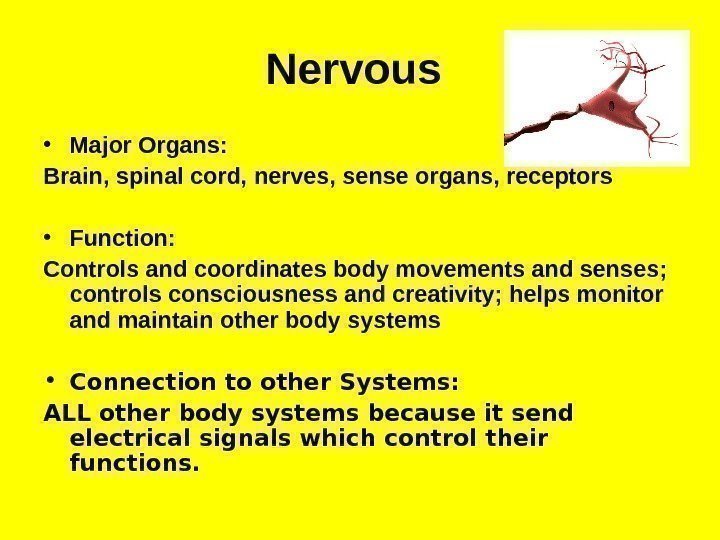
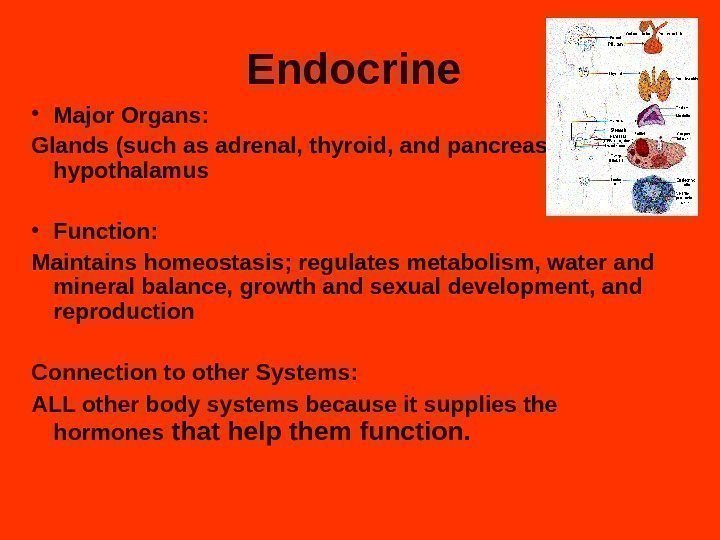
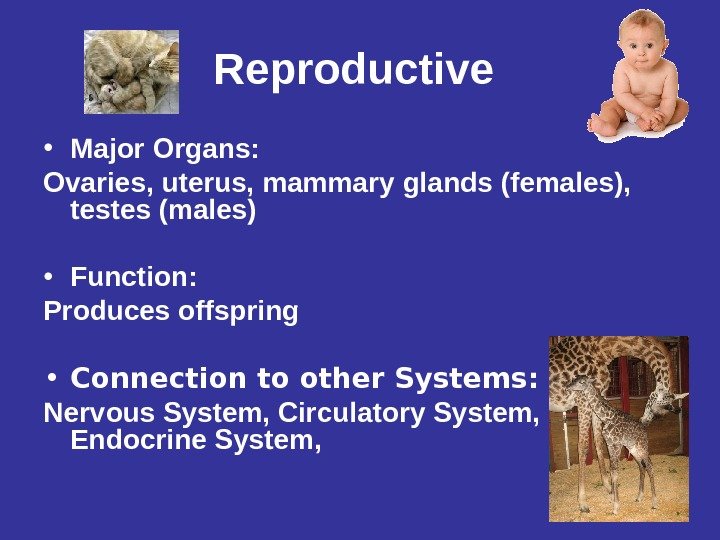
organ_systems_power_point_inghu.ppt
- Размер: 702.0 Кб
- Автор: Назерке Кажалаева
- Количество слайдов: 14
Описание презентации SUMMARY OF ORGAN SYSTEMS Skeletal Major по слайдам
 SUMMARY OF ORGAN SYSTEMS
SUMMARY OF ORGAN SYSTEMS
 Skeletal • Major Organs: Bones • Function: Provides structure; supports and protects internal organs • Connections to other Systems: Muscular System, Nervous System, Circulatory System
Skeletal • Major Organs: Bones • Function: Provides structure; supports and protects internal organs • Connections to other Systems: Muscular System, Nervous System, Circulatory System
 Muscular • Major Organs: Muscles (skeletal, cardiac, and smooth) • Function: Provides structure; supports and moves trunk and limbs • Connection to other Systems: Skeletal System, Circulatory System, & Nervous System.
Muscular • Major Organs: Muscles (skeletal, cardiac, and smooth) • Function: Provides structure; supports and moves trunk and limbs • Connection to other Systems: Skeletal System, Circulatory System, & Nervous System.
 Circulatory/Cardiovascular • Major Organs: Heart, blood vessels, blood • Function: Transport nutrients and wastes to and from all body tissues • Connection to other Systems: ALL other body systems!
Circulatory/Cardiovascular • Major Organs: Heart, blood vessels, blood • Function: Transport nutrients and wastes to and from all body tissues • Connection to other Systems: ALL other body systems!
 Circulatory/Cardiovascular • Path of Blood: • Heart to the body to the heart to lungs
Circulatory/Cardiovascular • Path of Blood: • Heart to the body to the heart to lungs
 Respiratory • Major Organs: Air passages, lungs • Function: Carries air into and out of lungs, where gases (oxygen and carbon dioxide) • Connection to other Systems: ALL because it supplies the body with oxygen and takes out carbon dioxide
Respiratory • Major Organs: Air passages, lungs • Function: Carries air into and out of lungs, where gases (oxygen and carbon dioxide) • Connection to other Systems: ALL because it supplies the body with oxygen and takes out carbon dioxide
 Respiratory • Exchange of Gases: • Oxygen (O 2 ) IN • Carbon Dioxide (CO 2 ) OUT
Respiratory • Exchange of Gases: • Oxygen (O 2 ) IN • Carbon Dioxide (CO 2 ) OUT
 Immune • Major Organs: Lymph nodes and vessels, white blood cells • Function: Provides protection against infection and disease • Connection to other Systems: Circulatory System, Digestive System, Urinary/Excretory System & Nervous System.
Immune • Major Organs: Lymph nodes and vessels, white blood cells • Function: Provides protection against infection and disease • Connection to other Systems: Circulatory System, Digestive System, Urinary/Excretory System & Nervous System.
 Digestive • Major Organs: Mouth, esophagus, stomach, liver, pancreas, small and large intestines • Function: Stores and digests food; absorbs nutrients; eliminates wastes • Connection to other Systems: Circulatory System, Excretory System & Nervous System.
Digestive • Major Organs: Mouth, esophagus, stomach, liver, pancreas, small and large intestines • Function: Stores and digests food; absorbs nutrients; eliminates wastes • Connection to other Systems: Circulatory System, Excretory System & Nervous System.
 Digestive • Path of Food: • MOUTH • ESOUAGHUS • STOMACH • SMALL INTESTINE • LARGER INTESTINE • ANUS
Digestive • Path of Food: • MOUTH • ESOUAGHUS • STOMACH • SMALL INTESTINE • LARGER INTESTINE • ANUS
 Urinary/Excretory • Major Organs: Kidneys, ureters, bladder, urethra, skin, lungs • Function: Eliminates waste; maintains water and chemical balance
Urinary/Excretory • Major Organs: Kidneys, ureters, bladder, urethra, skin, lungs • Function: Eliminates waste; maintains water and chemical balance
 Nervous • Major Organs: Brain, spinal cord, nerves, sense organs, receptors • Function: Controls and coordinates body movements and senses; controls consciousness and creativity; helps monitor and maintain other body systems • Connection to other Systems: ALL other body systems because it send electrical signals which control their functions.
Nervous • Major Organs: Brain, spinal cord, nerves, sense organs, receptors • Function: Controls and coordinates body movements and senses; controls consciousness and creativity; helps monitor and maintain other body systems • Connection to other Systems: ALL other body systems because it send electrical signals which control their functions.
 Endocrine • Major Organs: Glands (such as adrenal, thyroid, and pancreas), hypothalamus • Function: Maintains homeostasis; regulates metabolism, water and mineral balance, growth and sexual development, and reproduction Connection to other Systems: ALL other body systems because it supplies the hormones that help them function.
Endocrine • Major Organs: Glands (such as adrenal, thyroid, and pancreas), hypothalamus • Function: Maintains homeostasis; regulates metabolism, water and mineral balance, growth and sexual development, and reproduction Connection to other Systems: ALL other body systems because it supplies the hormones that help them function.
 Reproductive • Major Organs: Ovaries, uterus, mammary glands (females), testes (males) • Function: Produces offspring • Connection to other Systems: Nervous System, Circulatory System, & Endocrine System,
Reproductive • Major Organs: Ovaries, uterus, mammary glands (females), testes (males) • Function: Produces offspring • Connection to other Systems: Nervous System, Circulatory System, & Endocrine System,
